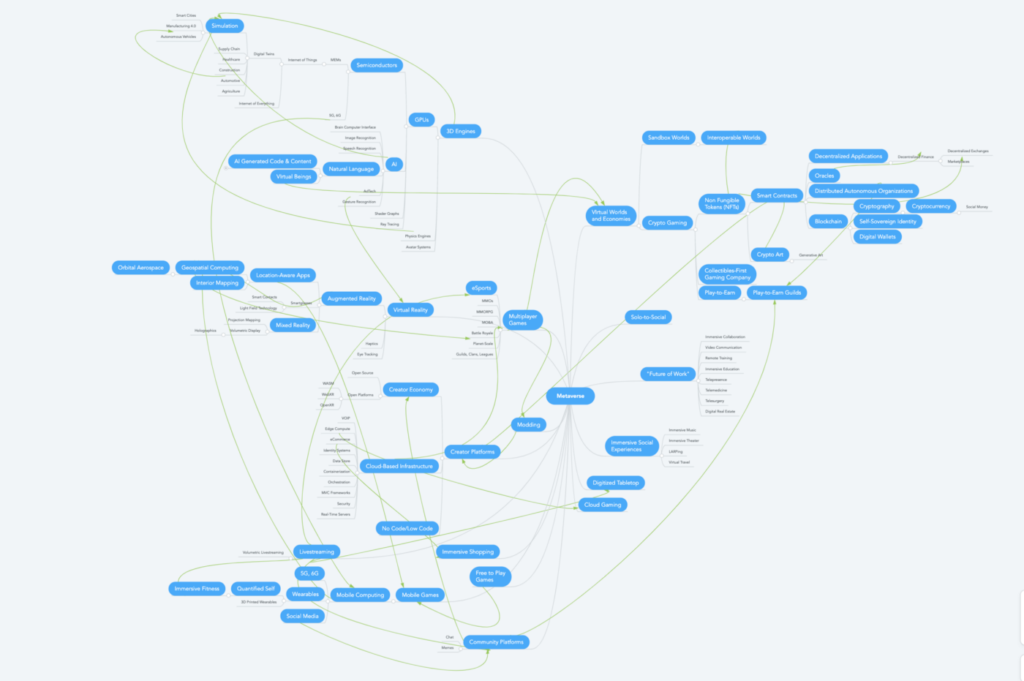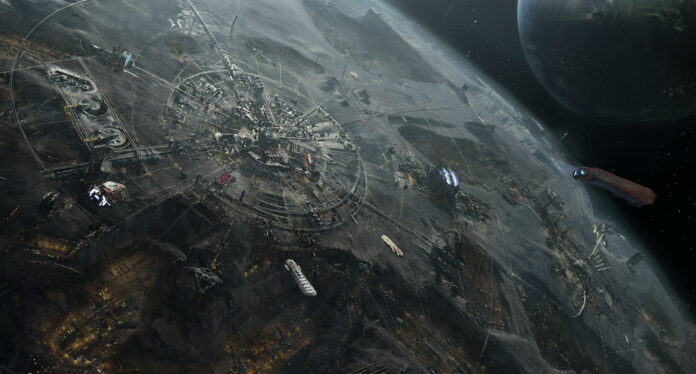Concept art from Sören Meding for Star Atlas, one of the games identifying as a metaverse.
There’s enormous hype surrounding the ‘metaverse’. This article is about understanding why — and more importantly — breaking it down to the elements so you can understand some of the specific technologies and experiences that are creating the excitement.
Check out the video below where I unpack many of the elements of the metaverse that people have in mind.
Meaningful metaverse projects
So where is the hype coming from? Part of it is dewey-eyed idealism about a future society that’s going to be more abundant, fair and equitable. Part of it is because recent IPOs like Roblox have been identified as metaverses. Not to be outdone, Facebook has now declared themselves to be a ‘metaverse company’ as well. And part of it is because there are in fact a huge collection of companies that have meaningful metaverse projects already, and are investing in the trends that will define the next decade of digital life.
Next gen internet
I find it more helpful to think of the metaverse as the next generation of the internet, rather than trying to label it with a set of requirements that declare who is or isn’t allowed into the metaverse club. The internet has always enabled the digitization and dematerialization of our world. The metaverse will accelerate this due to:
- Increasing real-time activity (vs. the more transactional origins of the internet that have dominated thus far)
- More playful experiences — creating not only the next generation of entertainment, but also building many of the ‘future of work’ and social applications on top of GameTech stacks and through the lens of game design.
- Re-decentralization — putting power and sovereignty back in the hands of creators, consumers, owners, independent companies, etc.
- Evolving virtual societies — the emergence of new forms of communities and cooperation as people get involved with all of the above.
I find that identifying the linkage between these trends is far more helpful than creating checklists like ‘the metaverse needs to be interoperable’ or ‘the metaverse needs to be 3D’ or ‘the metaverse requires NFTs’.
Categories
That said, it is helpful to think of the specific technology domains and categories that people have in mind when referring to the metaverse, because this lets you dissect the categories rigorously — as well as identify how everything fits into the overall schema of the metaverse and the trends we’re all experiencing. Andrew Green got me thinking about this breakdown with his post listing many of the salient categories. His list included these:
Generative Content / NFTs (Apes, Punks, etc.)
Extensible Game Systems (LOOT)
DAOs (YGG)
Pay-to-Earn (Axie)
Chains and Services (Flow, Forte)
Generative AI Content (Latitude)
Mass Social Experiences (Fortnite, Wave)
Digitized Tabletop (Demiplane, Role, Multiverse)
Creator-Driven Social Experiences (RecRoom, Roblox, Manticore, Mod.io)
Cloud (Facebook, xCloud, Stadia)
VR / AR (Oculus, t5)
Spatial Computing (Unity, etc.)
I took some of these ideas and built a metaverse mind-map to help us associate many of the categories with each other and gain a better idea of how they relate (e.g., the relationship of creator platforms like Unity or Beamable to the trends of re-decentralization, real-time activity, playfulness, etc. — or how re-decentralizing technologies like blockchains enable new types of virtual societies like DAOs or play-to-earn guilds.)

Further Reading
- I’ve tried to identify some of the megatrends like cybernetics, the mainstreaming of virtual identity and real-time simulation that provide a backdrop for the metaverse in 9 Megatrends Shaping the Metaverse.
- I created a Market map of the Metaverse to get a sense of the value-chain and identify the types of companies that are participation in building all of this.

